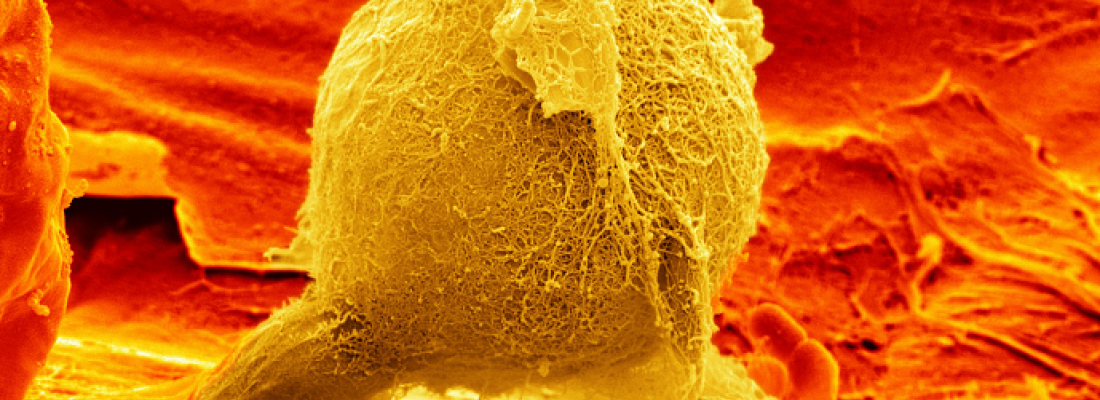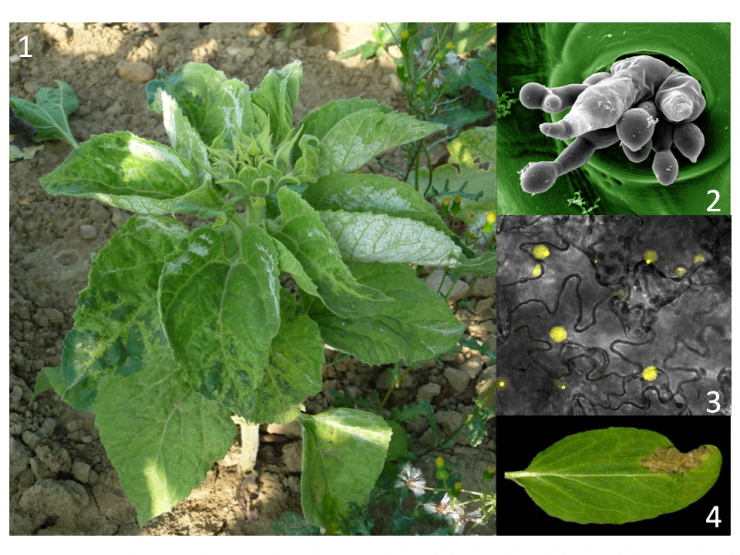Agroecology Reading time 3 min
A major advance in characterising downy mildew resistance genes in sunflower
Published on 10 January 2017

Downy mildew of sunflower is caused by the oomycete Plasmopara halstedii, a parasite that resembles a fungus. This disease has a major impact on the yield of sunflower grain and is under surveillance in Europe where there is currently a flare-up1, particularly in south-western France, an important sunflower-producing region.
The aim of this research was to identify the proteins (or effectors) responsible for the virulence of Plasmopara halstedii and then use them to identify the plant's resistance proteins that recognise them (in the same way as a key and a lock). In their article, the scientists described a new method for transient expression, developed by the INRA-CNRS Joint Research Unit for Plant-Microbe Interactions, which can be used to study the role of Plasmopara halstedii effectors and how they are recognised by lines of mildew-resistant sunflower.
During a natural infection, the effectors of the pathogenic agent are expressed in the plant. It was possible to reproduce this expression in the leaves of sunflower, which enabled visualisation of the P. halstedii effectors fused with a fluorescent protein in the plant cells. The effect of the expression of these effectors on the onset of hypersensitive reactions (HR) in the leaves of sunflowers resistant to downy mildew was also tested. Four P. halstedii effectors induced hypersensitive reactions only in sunflower lines with a P1 gene for resistance to mildew2but not in genetically close lines without the resistance gene. These effectors must therefore play a role in the resistance of sunflower to downy mildew, orchestrated byP1plant resistance genes.

Hypersensitive reactions (HR) are characteristic of the resistance of a plant against infection, reflected by the localised death of plant cells in contact with the pathogen, leading to the latter's elimination and protection of the plant.
Effector-induced HR is a rapid and simple test comparable to inoculation by downy mildew. Used to test the progeny of a cross between mildew-resistant and susceptible sunflower varieties, it will facilitate the characterisation of resistance genes, whose protein structure has not yet been determined.
Several types of resistance conferred by P1 genes are no longer used because they have been circumvented (or in other words, rendered ineffective) by the appearance of new and virulent mildew strains. The scientists have now searched for, and discovered, effectors present in all strains of Plasmopara halstedii, and thus highly conserved over evolution. These effectors are now their preferred target to find new types of resistance in sunflower that might be effective against all strains of downy mildew, difficult to circumvent by the pathogen and thus more sustainable in the field.
1 For more information on sunflower downy mildew, see the review: The sunflower downy mildew pathogen Plasmopara halstedii. http://onlinelibrary.wiley.com/doi/10.1111/mpp.12164/full
2 The resistance of sunflower to downy mildew carried byP1 genes exists naturally in non-cultivated varieties; they are therefore used for breeding and inserted by crossing with cultivated sunflower lines in order to enhance their resistance to downy mildew and improve their yield.
RXLR and CRN Effectors from the Sunflower Downy Mildew Pathogen Plasmopara halstedii Induce Hypersensitive-Like Responses in Resistant Sunflower Lines, Frontiers in Plant Science, 19 December 2016
Quentin Gascuel, Luis Buendia, Yann Pecrix, Nicolas Blanchet, Stéphane Muños, Felicity Vear and Laurence Godiard
